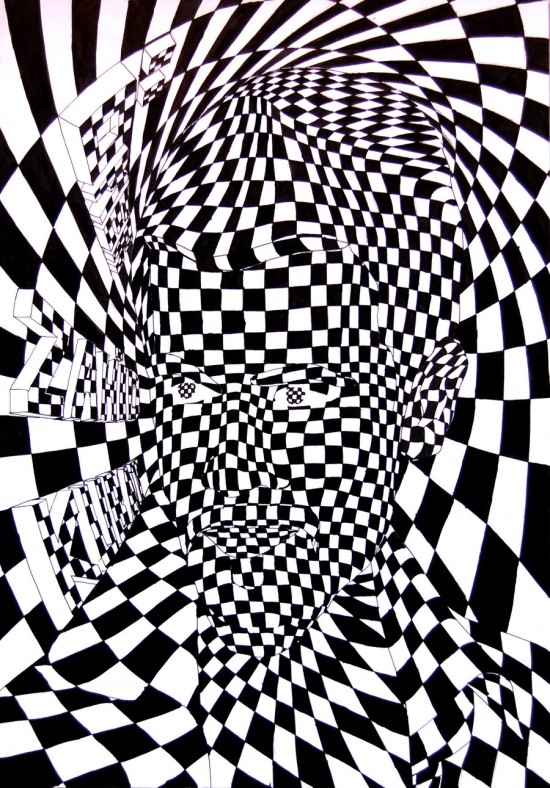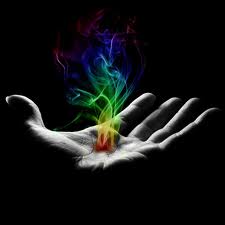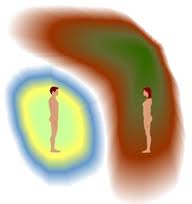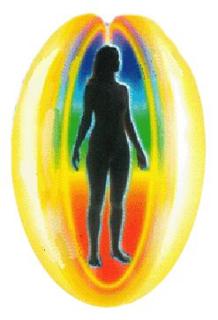
Our Mental House Part 6: Our Relations With Others
The purpose behind the Our Mental House series has been to explain more about our nature of our mind, its dynamics and subsequent influence on us. I have done this by examining the one factor that affects us the most, our thoughts. It is our minds that provide our interface to ‘reality’ and becomes what we identify as us. Even though it is only one aspect of what we are it does not take long before we see it as the only us. While this transference is gradual, it becomes almost complete by the time we are teenagers. It is like learning to walk only with shoes and then believing you need them to walk because you forget you can do so without them.
This illusion is strong, because our minds are strong and when empowered in only one direction, they become lazy and accustomed to it. Once the illusion takes hold it can only be broken by deconstruction of some of its core elements. We have painted ourselves into a corner and the key to getting ourselves out of it is not to shatter the illusion, though that certainly is a possibility. Instead what we want to do is expand the corner first. This is because if we have not developed new thought forms and we shatter the illusion or try to force matters we can be left with significant uncertainty and may find ourselves feeling lost and disconnected. We want to do is broaden our perspective and begin to manifest new thoughts that are in alignment and valid. This is the intent of all my writings, to expand the possibilities by awakening the awareness within.
We awaken this awareness by working with our minds at the conscious level and at the non-conscious level. No one can do this for another; I cannot make you see through the illusion. However, we can awaken from the artificial slumber we have created. In order to do so, we must want to. Sure, we can nibble away at it over the years, yet this is a slow process and it is easy to become distracted along the way. However, there is not getting away from the fact that in order to see through the illusion we must become aware of it and have a desire to get beyond it.
Once we have the requisite intent, we work at dismantling the illusion by approaching it from two directions, from the outside in and the inside out at the same time. Our conscious mind affects how our non-conscious mind integrates experiences and it is primarily superficial observation and erroneous reasoning that leads to its poor programming. This is the primary source of the illusion; therefore, correcting this is essential if we are to start to see through it. To get past the illusion we must train our non-conscious mind, it does not need to be informed.

Working the other way is more subtle; for this is the part related to our core, our spirit or soul. We want to allow these aspects of ourselves to, in a way burst forth into manifestation. We want to allow it freedom and we do this by taking time to connect within by meditative methods. We want to nurture our higher emotions so that they can work in conjunction with our mind to help guide our growth. It is more likely that we will pay attention to our conscious choices when we are compassionate and caring rather than pursuing personal needs.
I have covered most of this in the first five parts of this series. What we have not looked at in any detail is the linkage between our thoughts and the energies we manifest as well as how they affect our relationships with others. However, before we do so I want to refresh your memory by going over key points from the first five parts of the series.
We started with a look at what thoughts are how we create them, their integration and how they interact to form webs of thoughts. I covered this in Part 1, The Dynamics of Thought (1), where we looked at types of thoughts, from the simple ones to complex and then at conceptual ones. Thoughts are the body of our mind and it is through them that we perceive and then use to interact with the physical reality and express ourselves. They are not our only means of doing that; however, they are by far the most common.
“To help us come to a common understanding of what I refer to we will go into more detail about thoughts, their nature and how they combine and creating the vast array of thoughts that we have at our disposal. This knowledge is very helpful when one wants to start consciously working on their mental house, for it is comprised of thoughts. Knowing how we construct this house is essential if we want to start to change it.”
Once we had defined thoughts, we could look at them in action (“Thought Dynamics – The Practical Side (2)). By this, I am referring to the how the dynamics of thoughts affect the ones we create through to our interpretation of the world and the concepts and beliefs we take on. We also looked at the “strength” of thoughts, their integration and how these influences actions.
"Each day we feed our minds with experiences, new things to grasp, understand and deal with and our minds are rarely still. As we act and react our mind changes. How much it changes depends on the experience itself. Even a small barely noticeable experience can have an enormous impact on our mind because most of what our mind does is not at the conscious level. We may not even notice it right away, if at all as we are not aware of what it is doing on our behalf.”
And
” The bottom line, as they say, is that our mind is merely energy in various relationships. The energy of it is our thoughts. These energies form linkages with each other that result in webs of thoughts, ideas, concepts and beliefs and so forth. Being more mindful of your reactions and thoughts about them will help you to start to add less poor programming into your mind. This will also help you to build more confidence and improve the state of your emotional body. Less junk means less junk to deal with.”
I took this one-step further, in part 3, “The Consequences of How We Think” (3), by examining the consequences of how we integrate our experiences on our thinking. The root idea behind this being, “we are what we think”. We touched on awareness, and looked at how we end up thinking as we do.
“Imagine that every erroneous thought you have is like dirt on a window. It does not take much dirt for the image you see through the window to be distorted and unclear. The more dirt there is on the window the harder it is to see through. The dirt is synonymous with the poor programming of our minds and the dirt on it is the “I” that we become. We have a mind and we need it to exist here, but when we allow it to become thick with junk, it obscures our true self and takes on a life of its own separate from our “true self”. This is the message the great spiritual leaders throughout history have tried to convey through their words, often in the form of allegories. It is an important message for us to not just hear and listen to but to contemplate.”
We have countless thoughts every day, the majority of which occur at the non-conscious or sub-conscious level. So, in the fourth part, “What We Are Conscious Of” we looked at the factors that influence what thoughts we are aware of and the amount of control we have abdicated. Awareness of this can help us start to see through the illusion and take back some of this control from our non-conscious mind.
“A friend of mine once likened how our minds operate to the conveyors that move baggage around for pickup at an airport. Imagine a network of conveyor belts, countless miles of them interwoven and only a very short section passes out to where you pick up your luggage. This part would be synonymous with our conscious mind. Only a very, very small portion of the convey belt is visible outside of the wall (we do not see the baggage handling area), similarly, we are aware of only a very small subset of our thoughts. This is not to say that we cannot be aware of more, only that for the most part we are not. So, how does our mind determine what is visible out in front of the wall?”
And,
“Ultimately, it is each of us that have given the power to decide to our mind, so it is up to each of us to wrestle back control from it. It is easy to go on autopilot rather than to be fully cognizant in the moment. We become unable to be present in the moment as our minds keep feeding us thoughts that we have trained it to find important. We would rather live in our imaginings than in reality though few of us would like to believe this could be true.”
The topic in the last of the five parts, “The Affect of Our Thoughts” (5), we examined the affect of our thoughts on our energy and our perceptions of others. We do not exist in isolation even though we may not be able to ‘see’ our energy at work. Our thoughts affect our energy and as a result, affect our interpretation of what we perceive. We cannot assume that our thoughts about others are accurate because we are not clear and balanced ourselves.
“When we encounter people, we perceive them as they are. This perception includes all the energies they project, their aura and so on. However, our minds interpret what we perceived based on how we have programmed it to. As a result, we often have thoughts that are not valid. We tend to react and not allow or simply act on what we perceived; but this is part of our growth.”

To close the loop on this series, we will look at the affect of our thoughts on our aura and on how they can affect our interactions with others. It is certain that our energy affects how others perceive us; however, it is unlikely they are aware of how nor can we say they will react to us a particular way for a particular reason. All we can do is become more cognizant of our energy and of others reactions to us. I say more cognizant for a reason, and that is because it is very difficult to be aware of their energy or even our own.
For instance, we may think and even feel we are approaching someone in a loving way, but that does not mean we are or, assuming we are, that they will perceive it that way. There are a number of reasons why this is the case. Among them are the following:
- Our energy could be different than we perceive it to be in both “size” and type
- There are many levels to our aura and while we may be ‘one way’ at one level, we can be entirely different at another
- Others may be perceiving our energy at a lower or higher plane than it is acting on
- They may be perceiving us through their own emotional energy rather than clearly as we are
- We may believe that others will perceive our energies as we do, yet they may relate to it differently
To add one more wrinkle to things, we must be aware that our perception of another is the result of numerous factors, including their energy, thoughts and emotions and ours, as well as the circumstances of the experience. Further, a significant portion of our reaction is from thoughts, emotions and energies of which we are not conscious. Our perception of another is also dependent on our level of awareness just as their level of awareness affects their perception of us. Therefore, you can see that while we tend to assume that we take people as we see them, this is not generally the case. When we know the person, our history with them is an additional factor, just as our uncertainty can be a factor when meeting someone new.
Our auras do have a general state, and it is different for every one of us. Our auras develop as we grow up; therefore, they reflect our personality. People who are shy tend to keep their energy close in and the energy on the surface, if you can call it that, is well defined, though often has little offshoots used to sense whether others are a threat or not. Not that this implies what their interpretation is accurate, just that they tend to probe people to try to determine if they are safe. Their thoughts play a significant role in this, thoughts of being reserved keep their energy in. The probes I mention, come from thoughts such as “I don’t know whether you like me or not” or “You make me feel nervous” which can cause tiny offshoots of energy to reach out to verify if it is true (again, it doesn't mean that what they "get" is necessarily accurate).
Others may or may not notice this, it all depends on what they pay attention to and, of course, different people will react to it their own way. Some may feel it and begin thinking about remaining calm, unobtrusive and open so the person does not feel threatened. Others might notice this as weakness and push at the person in one way or another. Their thoughts will cause their energy to shift and energy follows attention. Therefore, our thoughts manifest movement in the energy on the surface of our aura. Depending on other thoughts, it may even balloon out a bit in an intimidating manner.
Try to imagine energy extending from people, and that the size and outside of it shift as their thoughts and emotions shift. Shifts in the outer surface are far more common than shifts in the size of aura, and the overall energy does not change much unless strong emotions are involved or we focus their attention.

Now, think for a moment about a time when you have observed someone who has focused in such a manner; I am sure you could feel it and not just notice it from how they are acting. If you approach such a person they may appear to brush you off, fact is that it is likely that they barely notice you, and probably will give you very little thought unless you have something in common with what has their attention. If we are the kind of person who expects others to notice us, we may perceive this as aloofness or dismissive, which could bother us. We may take it personally and then react. We may then get frustrated and can become agitated and the other person notice this and if they have issues with frustrated or agitated people, they may react back. This is a good example of erroneous reasoning, and shows how we can end up misreading others and how our reactions can influence our experiences.
As I have mentioned, our auras are not rigid; they expand, contract and the outer edge can change along with our thoughts and the emotions they manifest. When we are very charged up with an idea or feeling our auras tend to expand, when we are scared and feeling hurt it contracts to just outside our physical bodies. Further, these changes can happen instantaneously, though only from significant shifts in attention or if our thoughts trigger strong emotions.
When you consider all these factors, you realize that the actual dynamics of our energy interactions with others can be very complex. However, as I have mentioned before, do not let this concern you. I do not mention it to scare you, only to make you more aware and therefore more conscious of the reactions of others. This will help you to take greater conscious control of your thoughts and emotions and, as a result, your energy.
For better or worse, the most significant factor in how most people view us is their thoughts about us, rather than our energy. This is because most people are firmly stuck in their thoughts. They may sense the energy of others, but through their experiences may have come to distrust their non-rational awareness and go with their thoughts and feelings about the energy rather than what is actually there. You may have noticed this as well, in how some people may seem callous towards others or unfeeling, yet it is not typically a conscious choice. They will know at one level, but if it does not reach their conscious attention, they are essentially oblivious to it.
I could go through hundreds of examples, and not even begin to scratch the surface of the variety of interactions between people. What is beneficial to take away from this is the awareness that your thoughts can and do affect your energy, and this can influence your interaction with them. Further that what you perceive at the conscious level may not actually be the case.
I am sure that you have met people and instantly had an impression of them. You may have liked them or perhaps distrusted them at first glance. The interesting point to note is that it is entirely possible you are not seeing them as they are, you may be reacting to how you perceive them based on their energy and how they appear to you.
First impressions are important, we all know that, but first impressions are rarely as accurate as we believe. Further, we cannot be sure that our own energy is not affecting our perception of them. The term immiscible is one used to describe two liquids that will not mix to form a single homogeneous substance. Energies can be immiscible as well and it does not imply that there is anything negative about either one. We are not often aware of these interactions and tend to act on our thoughts. If you consider this, you will find in it the reasons why our experiences affect our life more than our conscious thoughts. This is how our minds programming, that is the action-reaction capabilities we have enabled (6) influence our choices. By this I am referring to what we like and do not as well as who we like. This is also why we attract the influences we do to learn, though too few pay attention to this and even fewer understand the reasons.

Next time you meet someone, pay attention to the interaction, try to notice how you feel and react to them, as well as how you feel they are reacting to you. Can you see a relationship between your thoughts and the state of your energy (as you perceive it to be) to their reaction? Do not dwell on it, as doing so invariably gets us thinking too much and we want to avoid this. Let the perception simply be there.
Clairvoyant people do not analyze their perceptions. They allow them to be. Of course, their own energies and thoughts can cloud their perception; therefore, what separates average clairvoyant from gifted ones is the ability to avoid this. They do not edit what they perceive; they let the awareness be as it is. We learn to edit what we are conscious of as I covered in Part 4, and in the exercise on honesty (7). How much our mind edits which thoughts we are conscious of is related to our level of honesty, or looking at it another way, our degree of transparency. The more transparent we are (that is our minds), the less we edit and interpret.
I would be remiss if I did not at least touch on some negative aspects of energy reaction, ones of which you should be aware. One is that some people have a tendency to draw on the energy of others and another is some people are confrontational leading to energy clashes. Both types can be a huge drain on our energy, though obviously for different reasons. One thing both have in common is that they can have us feeling unsettled or drained.
Now, be cautious and do not jump to conclusions, for there are other interactions that can yield the same result. If you are sensitive, you will be able to notice a pull on your energy, indicating that someone may be drawing your energy. To rectify this simply visualize your energy field as being solid and unmoving, if it does not seem to help then you may have thoughts that are blocking this. Feeling sorry for someone can do this or you may be attracting to them at some level. You can do the same thing to reduce the energy clashes, though you may have to try different thoughts or visualizations before it works. With practice you can learn to change your energy to deal with just about any external influences. This is a form of shielding (8).
Remember, you are the master of your own energy and can learn to control how it acts and reacts by your thoughts. No one can take, play with or manipulate your energy unless you allow it. If we find it difficult to prevent such things then we have thoughts and webs of thoughts at the non-conscious level that are allowing it. It could be complex thoughts or perhaps even concepts or beliefs. The only way to find out is to explore the energies we perceive, and track back from there to the thoughts that manifested the energies and finally to the experiences where we manifested the thoughts. One can do this in meditation, though this is also one of the values of talking through things as one may do with a friend or psychologist, and why learning automatic writing skills can be so valuable (9).
Do consider how your reactions to others, interpretations guided by programmed responses at the non-conscious level, affect your choice of friends. We like certain people and not others and by doing so change the course of our lives. Why this person and not that one? If we are allowing our experiences to guide us then we are merely stuck in the illusion. We can grow beyond this by taking a more conscious approach to our interactions instead of letting our past guide our future and the key lies in our thoughts. Know thyself.
© 2012 Allan Beveridge
References (*- denotes essays only available to site members of TheTwinPowers.com):
Note: References 1 through 5 are the first five parts of the "Our Mental House Series" that this this essay concludes.
- Our Mental House Series Part 1: The Dynamics of Thought
- Our Mental House Series Part 2: Thought Dynamics: The Practical Side
- Our Mental House Series Part 3: The Consequences of How We Think
- Our Mental House Series Part 4: What We Are Conscious Of
- Our Mental House Series Part 5: The Affect of Our Thoughts
- Our Evolution
- *Exercise 2 - Improving Our Honesty
- *Shielding
- Automatic Writing: Writing from the Inside Out
